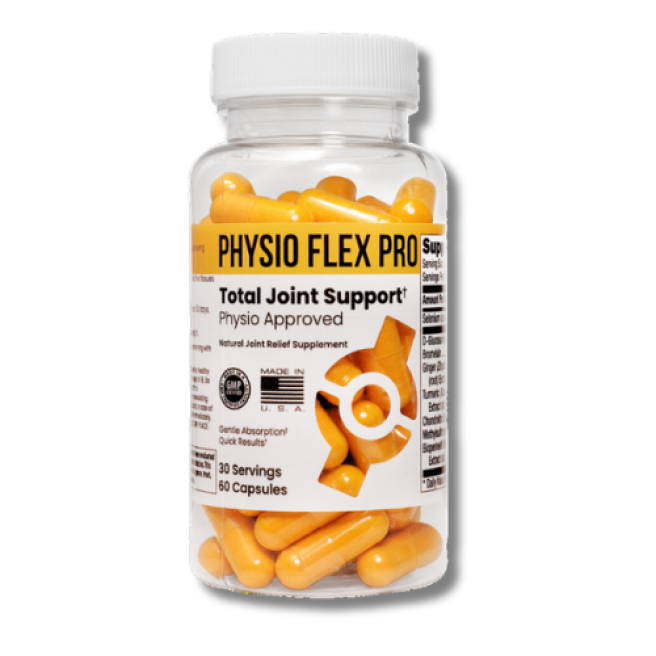The sharp, nagging pain in your lower back isn't just a minor inconvenience; it's a sign that your sacroiliac joint might be crying out for attention.
If you've been scouring the internet, searching for effective exercises to alleviate this discomfort, you're not alone. Many individuals, just like you, are desperate to find a solution that doesn't involve heavy medications or invasive procedures.
Having spent over a decade in the health and fitness industry, I've seen firsthand the transformative power of targeted exercises. In this comprehensive guide, I'll share expert-approved exercises specifically designed for sacroiliac joint pain relief.
Not only will we delve into the most effective exercises, but we'll also highlight common mistakes to avoid, ensuring you get the most out of your routine. So, if you're ready to take control of your health and find genuine relief, read on.
What Causes Sacroiliac Joint Pain?

Before we talk about sacroiliac joint pain, it is essential to understand the anatomy of the sacroiliac joint, also known as SI.
This is the joint that connects your iliac crests (hip bones) to your sacrum, which is the triangle-shaped bone between the lumbar spine and tailbone.
This joint helps absorb shocks that occur while making movements between your upper body and legs. It is also responsible for forward and backward bending movements.
Referred to as sacroiliitis, sacroiliac joint pain is one of the most common reasons for lower back pain. According to The Open Pain Journal, sacroiliitis is mainly caused due to:
- Gout
- Obesity
- Leading a sedentary life.
- Degenerative conditions like osteoarthritis
- Autoimmune conditions such as ankylosing spondylitis
- Injury or trauma such as an accident or fall
- Pregnancy leads to the release of relaxin. This hormone makes the joints less stable
What Are Some Of The Best Exercises For Your Sacroiliac Joints?
Just because you experience pain in your sacroiliac joint, doesn’t mean that you have to live with it and compromise on the quality of your life. Exercising is a safe, natural, and side-effect free way of strengthening your sacroiliac joints.
Here are some of the best SI joint pain exercises that will help build stability in the pelvis and reduce tension and pressure on the surrounding muscles.
1. Knee-to-Chest Stretch:
One of the most effective sacroiliac joint pain exercises, knee-to-chest stretch help in strengthening your hip muscles. 
- Lie on your back on a yoga mat.
- Hold your left knee and pull it slowly towards your chest. You may feel a slight stretch in the back of your leg.
- Hold the pose for 30-40 seconds.
- Repeat on the alternate side.
2. Piriformis Stretch for SI Pain

- Lie on your back with both knees bent.
- Cross one ankle over the opposite knee.
- Gently pull the uncrossed leg towards your chest, holding it with both hands.
- Hold for 15-20 seconds, feeling a stretch in the buttocks.
- Switch legs and repeat for the remaining time.
3. Trunk Rotation:
This is a great exercise to activate, stretch, and strengthen the muscles on the side of your core.
- Lie comfortably on your back.
- Keep your feet flat on the ground. Your arms must be stretched in a ‘T’ position.
- Keeping your knees together, twist them to your left as much as you comfortably can.
- Hold the pose for 4-5 seconds.
- Repeat on the other side.
4. Ankle Pumps
- Lie flat on your back with legs extended.
- Slowly point your toes away from you, then flex them towards you.
- Continue the pumping motion for the duration of the minute.
5. Hip Abduction Strengthening Exercise:
One of the most helpful sacroiliitis treatment exercises, this targets your abductor muscles and makes them stronger.

- Lie on your back with your knees bent slightly.
- Place a resistance band around your knees.
- Raise your hips off the ground.
- Push your knees apart slowly.
- Hold the pose for 5-10 seconds and bring back the knees together.
6. Bird Dog:
This is an effective SI joint pain exercise that gives your SI joint muscles a good stretch. It also works on your lower back and gives stability to your lumbar spine.

- Get on all fours while keeping your spine and neck in a neutral position. Focus your gaze on the ground.
- Gently extend your right leg and stretch your left arm outward.
- Remember not to arch your back.
- Hold the pose for 5-10 seconds.
- Repeat on the other side.
10-Minute Daily Stretching Routine for Sacroiliac Joint Pain Relief
- Warm-Up - 2 minutes
- Gentle marching in place or side-to-side weight shifts.
- Knee-to-Chest Stretch - 1 minute
- Piriformis Stretch - 1 minute
- Trunk Rotation - 1 minute
- Ankle Pumps - 1 minute
- Hip Abduction Strengthening Exercise - 1 minute
- Bird Dog - 1 minute
- Cool Down - 2 minutes
- Deep breathing exercises.
Exercises to Avoid with Sacroiliac Joint Pain
While the exercises we listed above can be help alleviate pain and strengthen the sacroiliac joint, not all exercises are beneficial.
In fact, certain movements can exacerbate the pain or even lead to further injury. If you're experiencing sacroiliac joint pain, it's crucial to be aware of which exercises to steer clear of.
Here's a list of exercises that are best avoided:
High-impact Aerobics
- Activities such as running, jumping, and high-intensity interval training can put excessive strain on the sacroiliac joint.
- The repetitive impact can lead to increased inflammation and pain.
Deep Squats
-
While squats can be beneficial for strengthening the lower body, deep squats can place undue pressure on the sacroiliac joint.
-
It's essential to maintain proper form and avoid going too deep, especially if you're carrying weights.
Twisting Movements
- Exercises that involve excessive twisting of the spine, such as certain yoga poses or Russian twists, can strain the sacroiliac joint.
- It's best to approach these exercises with caution and modify them to reduce the twisting motion.
Leg Press Machine
-
Using heavy weights on the leg press machine can place a lot of pressure on the pelvis, affecting the sacroiliac joint.
-
If you choose to use this machine, ensure you're using a weight that doesn't cause discomfort and maintain proper form.
Sit-Ups/Crunches
- These exercises can put direct pressure on the sacroiliac joint due to the flexion of the spine.
- Overdoing situps and crunches can lead to increased tension in the lower back, exacerbating sacroiliac joint pain.
Excessive Cycling
- Prolonged cycling, especially with improper posture or a poorly adjusted bike seat, can stress the sacroiliac joint.
- The repetitive motion and position can lead to misalignment and increased pain.
Golf or Tennis
- The rotational movements in golf and tennis can strain the sacroiliac joint.
- The forceful swings and sudden twists can lead to overuse injuries, especially if proper form is not maintained.
Tips for Safe Exercising
-
Always warm up before starting any exercise routine.
-
If you feel any pain or discomfort during an exercise, stop immediately.
-
Consult with a physical therapist or healthcare professional to get personalized advice on which exercises are safe for you.
-
Remember, everyone's body is different. What might exacerbate pain for one person might be completely fine for another. It's essential to listen to your body and seek expert guidance when in doubt.
What Else Helps?
In addition to having an exercise plan in place, according to the Journal of Orthopedic Surgery and Research, adding supplements with chondroprotective agents such as glucosamine and chondroitin helps.
Good quality supplements like Physio Flex Pro that contain all of these ingredients are not only safe but also lower pain and improve SI joint function.
Make sure you don’t sit for prolonged hours. Change your sitting position. Keep your knees slightly apart when you sit and avoid crossing your legs. Use hot and cold treatments to alleviate pain and enhance your blood circulation.
The Bottom Line
Before starting any exercise plan, consult your doctor. Be gentle with yourself and stay consistent with your routine. SI joint pain can be easily managed by adopting a holistic whole-body approach and maintaining a healthy lifestyle.






